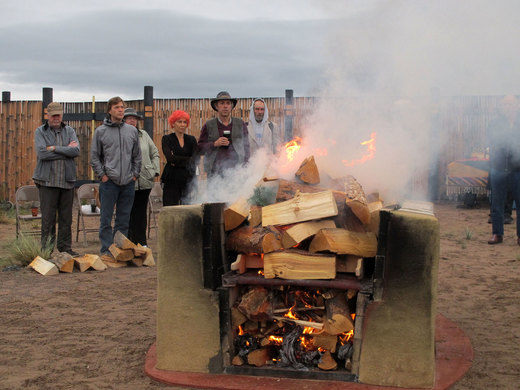A look at the traditional funerary rituals of the mainland, Asia and beyond

By
[T]he veneration of elders holds significant standing in Chinese culture, and reverence for its rituals endures beyond any individual’s time of death. As a traditionally patriarchal religion, the celebration of lineage and ancestry is integral to what it means to be Chinese.
On April 5, Hongkongers travelled on roads and in air-conditioned trains to pay their respects for Ching Ming, a public holiday widely known as the grave-sweeping festival. At the final resting place of their loved ones, celebrants replaced wilted flowers with fresh ones, incense and paper offerings were burnt, and food was laid out before the headstones of tombs citywide. Three pairs of chopsticks get placed above a display of food, which often consists of an assortment of meats and pastries.
To the Chinese, continuing obeisance to their forebears is as symbolic as their initial burial. The bedrock of intergenerational customs, funerals are considered a normal element of family life. Amid this week’s festival of honouring ancestors, City Weekend explores traditional funerary rituals in mainland China, Asia, and beyond.

China
The belief in Chinese folk religion is that people have multiple souls, known as ‘hun’ and ‘po’. Upon death, these souls diverge, with hun rising to the heavens and po descending into earth. Chinese funerary rituals vary with the age, cause of death, and marital and social status of the deceased, but they respond to the needs of the two souls. The primary aim is to provide comfort for the deceased and demonstrate ancestral veneration. Regional traditions and minority groups determine the precise practices, but in general, the ceremony is carried out over the course of seven days. The deceased is clad in white clothing; red, which symbolises happiness, is rarely worn. Rituals and gestures are often carried out three times in accordance with the number’s positive connotation.

Tibet
For thousands of years, Vajrayana Buddhists in Tibet and Mongolia have believed in the migration of spirits postmortem, the idea that the soul moves on as the body becomes an empty vessel. Because wood is too scarce for cremation and the terrain is too rocky for earthly burials, Tibetans believe the body must be chopped into pieces while Buddhist lamas chant and place it on a mountaintop – exposing it to the elements and to vultures – to return the soul to earth. The dead are placed in the fetal position and wrapped in cloth. The rogyapa, or person who breaks the body, unwraps it, saws away at the skin and strips it of its muscles and tendons, ultimately arranging it in a manner that attracts Himalayan griffon vultures to dine on the broken body. Consumption by the vultures is how the body is considered to be reunited with nature, where it can be of use again.
South Korea
Due to dwindling grave space, in 2000, the South Korean government passed a law requiring that the buried be removed from their graves after 60 years. Cremation has since become the country’s favoured form of funerary rite – breaking thousands of years of tradition. Several Korean companies offer “death beads”: turquoise, pink, or black gems made by compressing the ashes of the deceased. Traditionally, the funeral is similar to its Chinese counterpart, but infused with elements of Korean Confucianism.
Ghana
Funerals in Ghana are held to celebrate the life of the deceased and not merely mourn their departure. The approach differs from many cultures that regard the event as sombre rather than cheerful. This celebration of the dead is so revered that funerals are often the cornerstone of Ghanaian social life. As a result, they are often joyous social events with hundreds of attendees: the more, the merrier, and the more lovable the person must have been in life. Coffins are usually intricately ornamented and vibrantly coloured, adorned with items that represent the deceased’s profession or favourite things. A shoemaker’s coffin, for example, might come in the shape of a shoe.
Ukraine
Ukrainian rituals are heavily rooted in tradition. They organise banquet feasts on the third, ninth and 40th days after death, and again on the six-month and one-year anniversaries of the deceased’s passing. An even number of flowers is placed next to the coffin and expected from each funeral attendee. Water plays an important role because it is believed the soul of the dead drinks the water and uses it to wash away tears. Water is placed alongside a woven towel, with both serving as spiritual offerings. Mourners are required to avoid drinking water in the body’s presence. In accordance with ancient times, sleds are occasionally still used to transport bodies to burial sites in the mountainous Carpathian region of the country.

Colorado, USA
Colorado is home to the Crestone End-of-Life Project – billed as the only legal, public, open-air crematorium in the United States. In the town of Crestone, mourners place juniper boughs, piñon pine and spruce tree logs on the body of the deceased; they encircle the subject of cremation. The materials are chosen for their high flammability, and the mourners watch as fire overwhelms the body. Many are drawn to this funerary ritual, but residency in the small town is a prerequisite to take part.
Complete Article ↪HERE↩!
